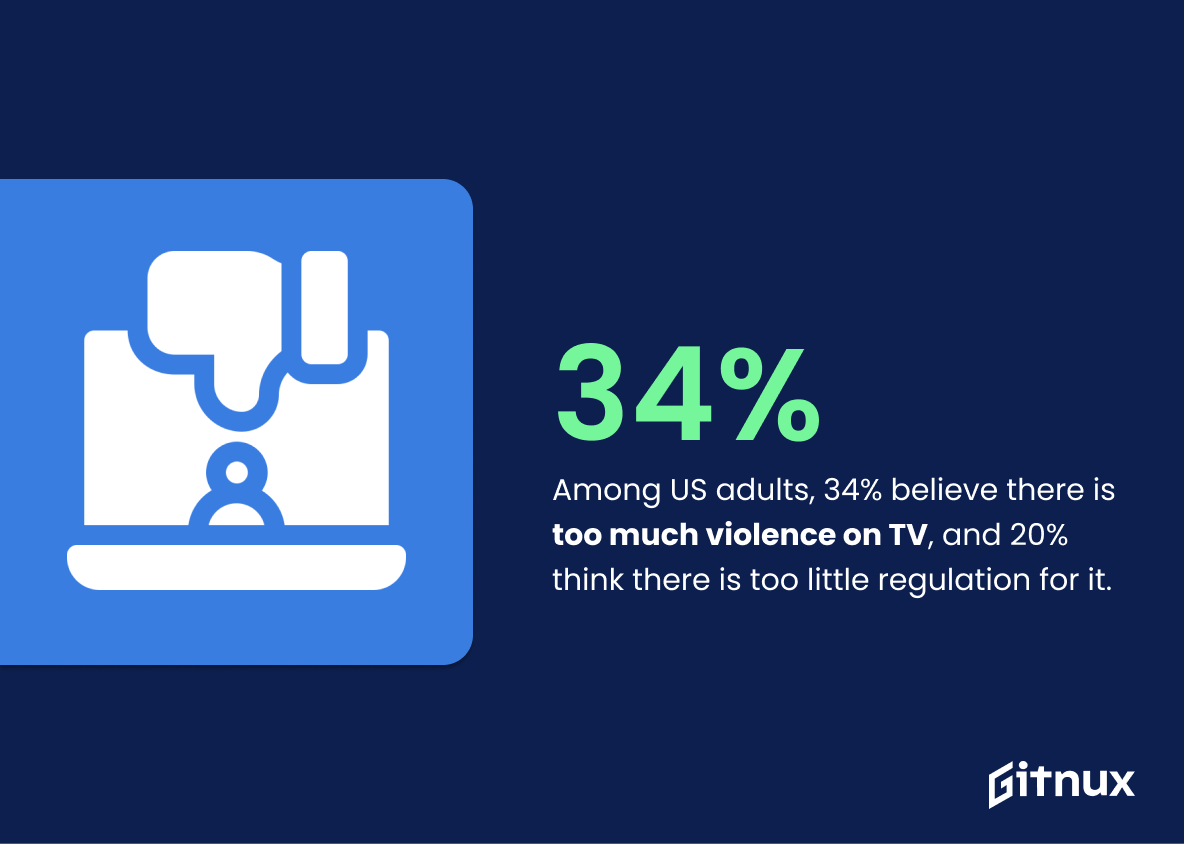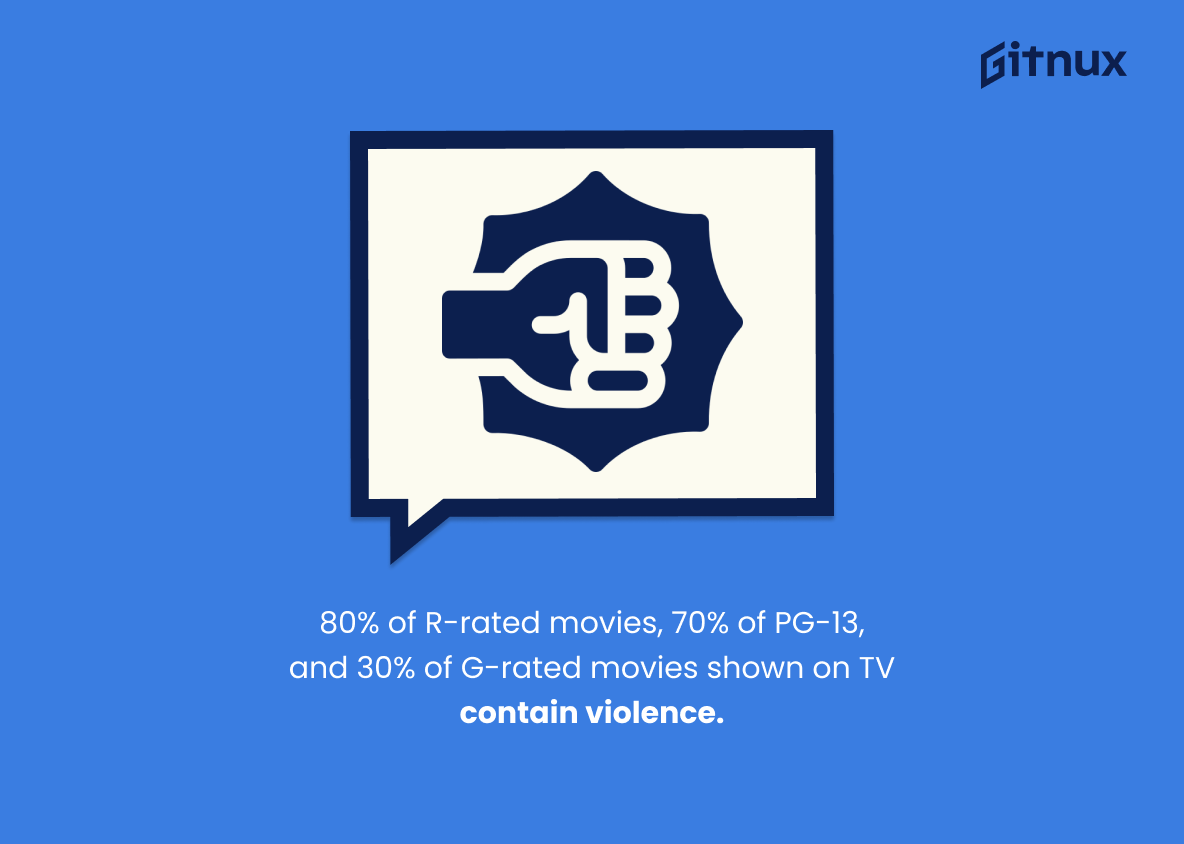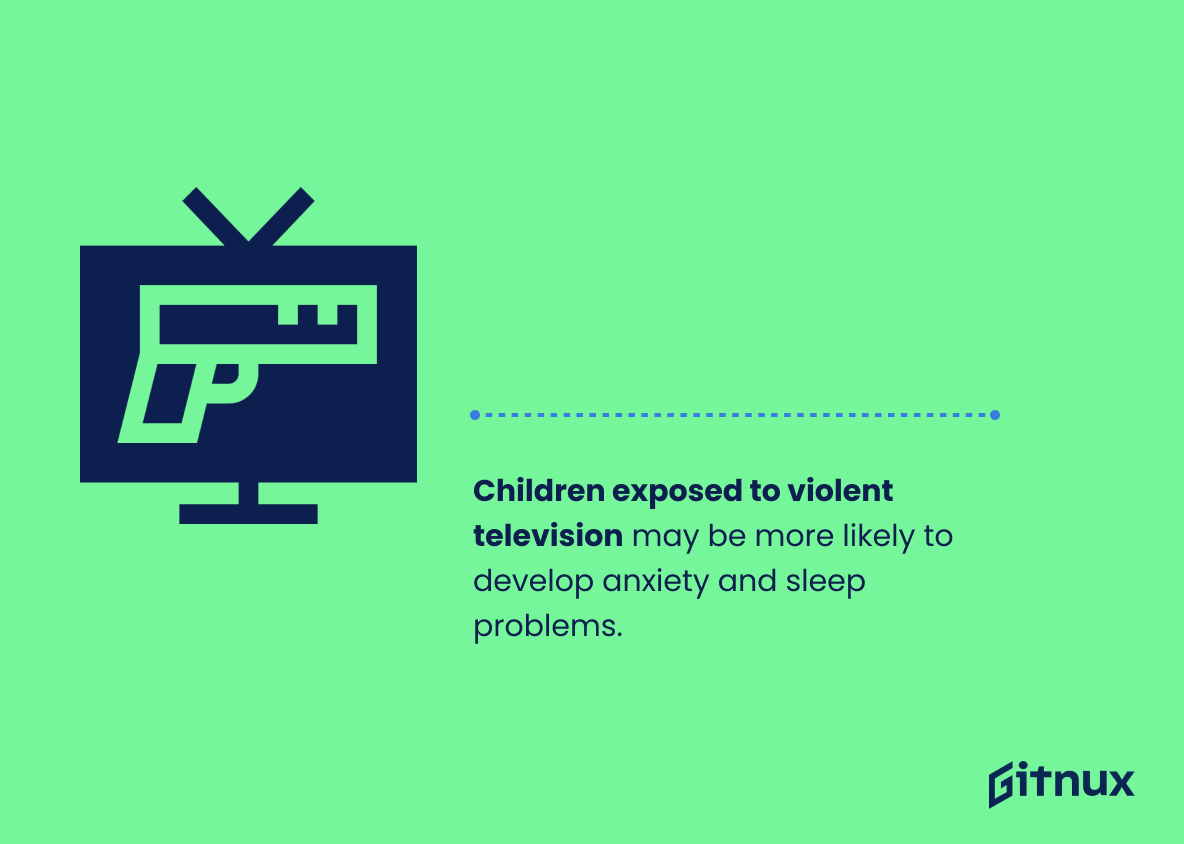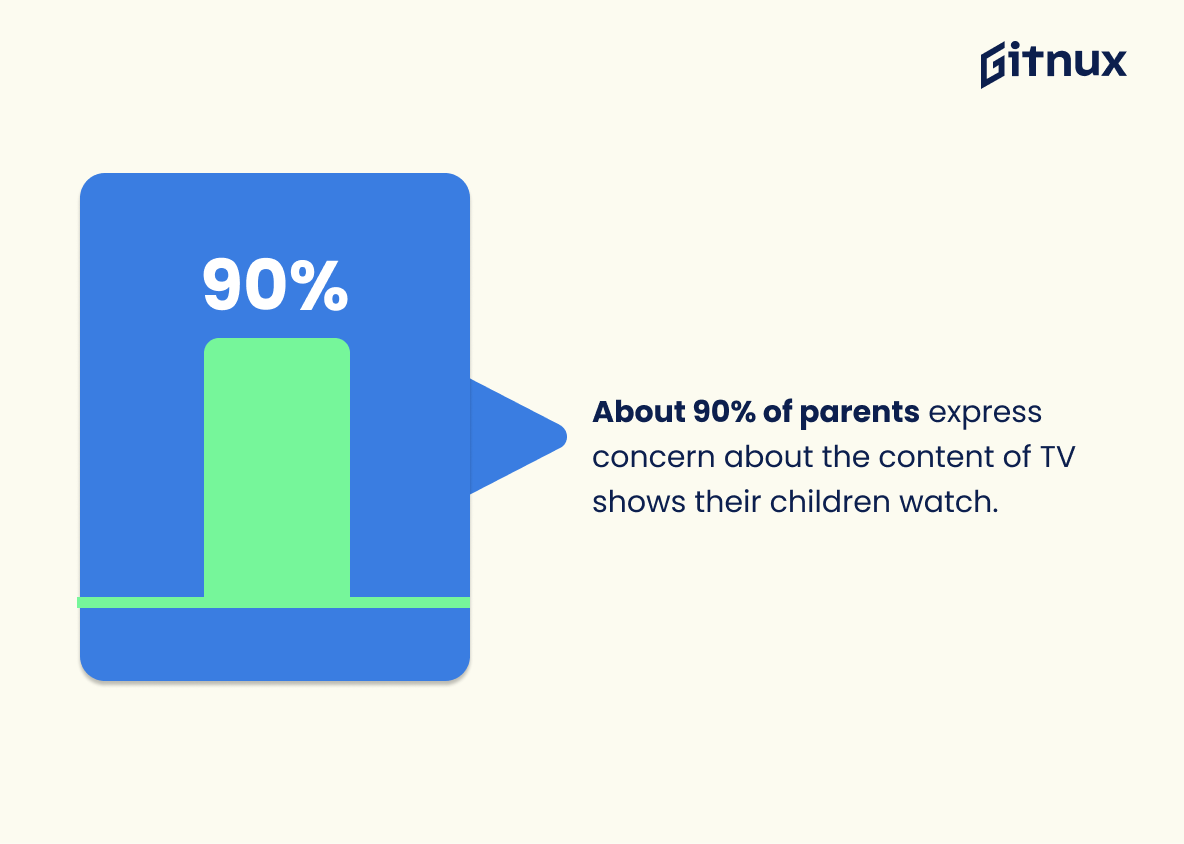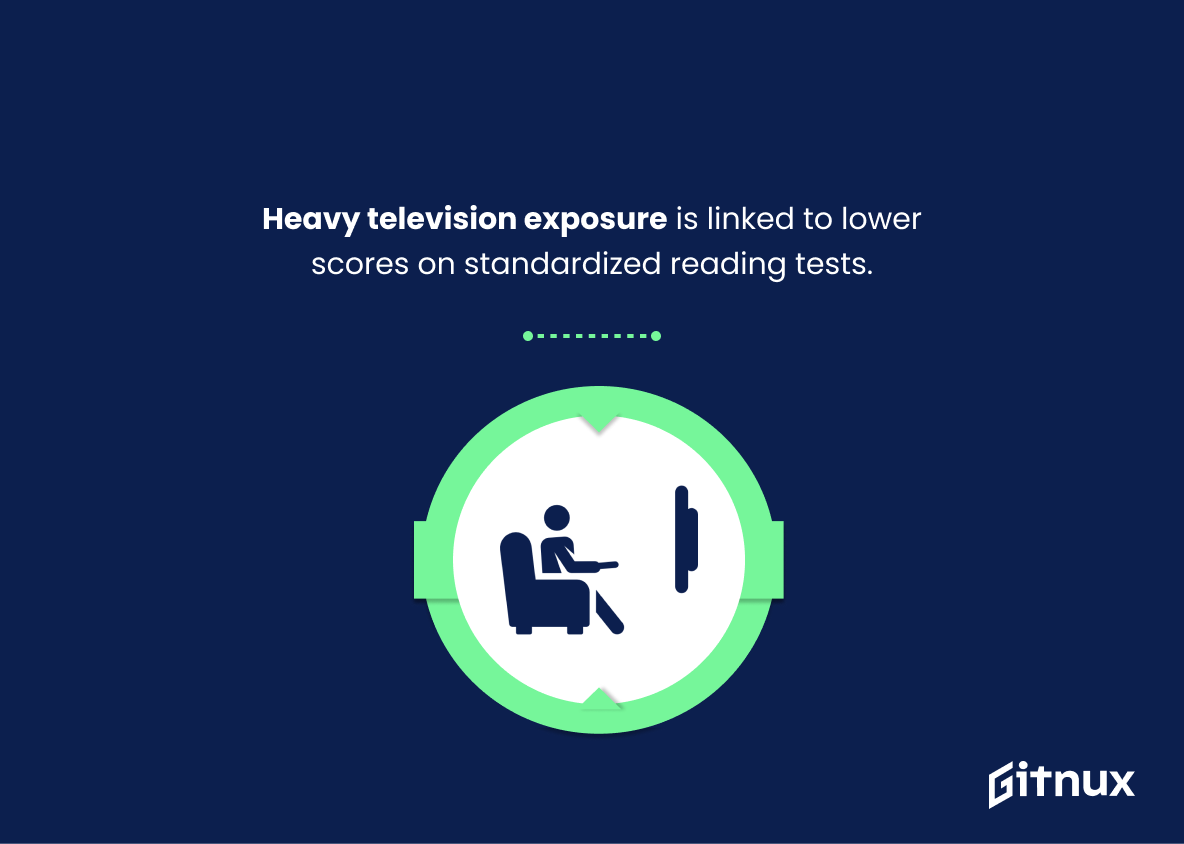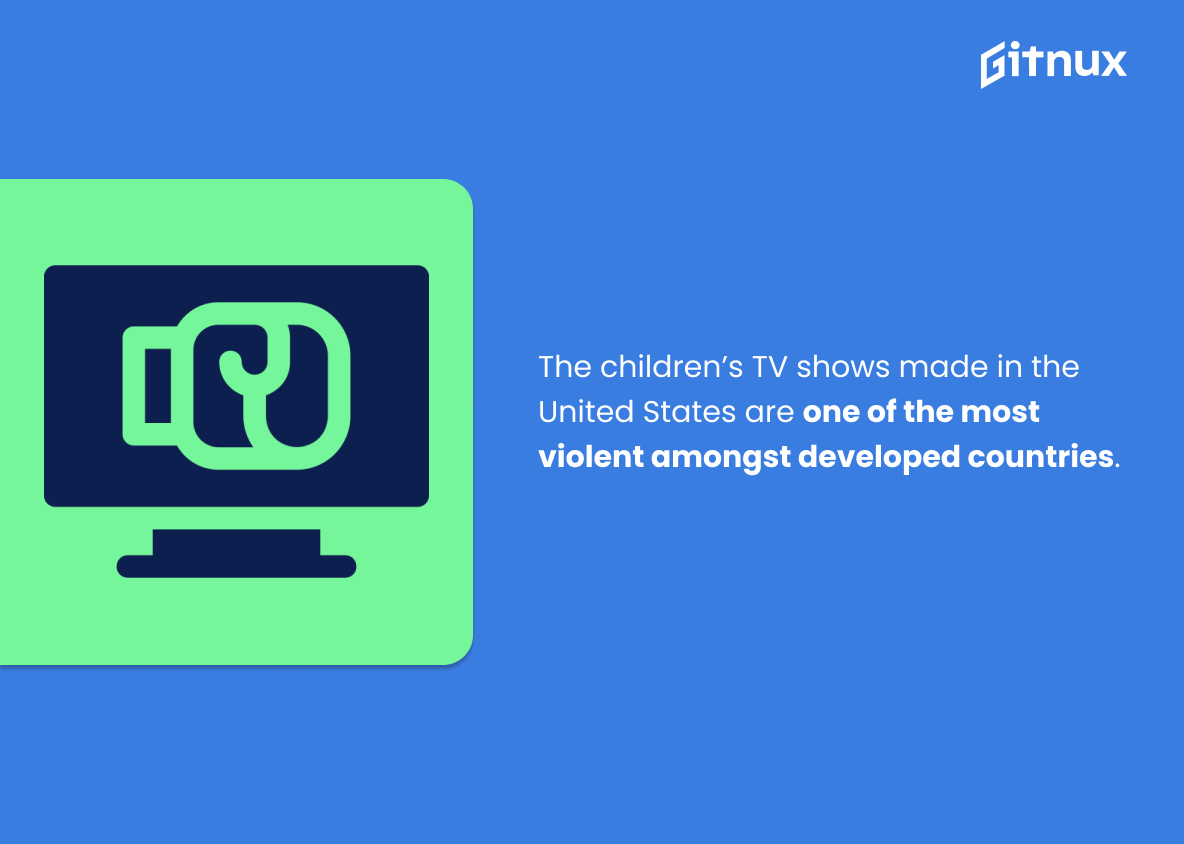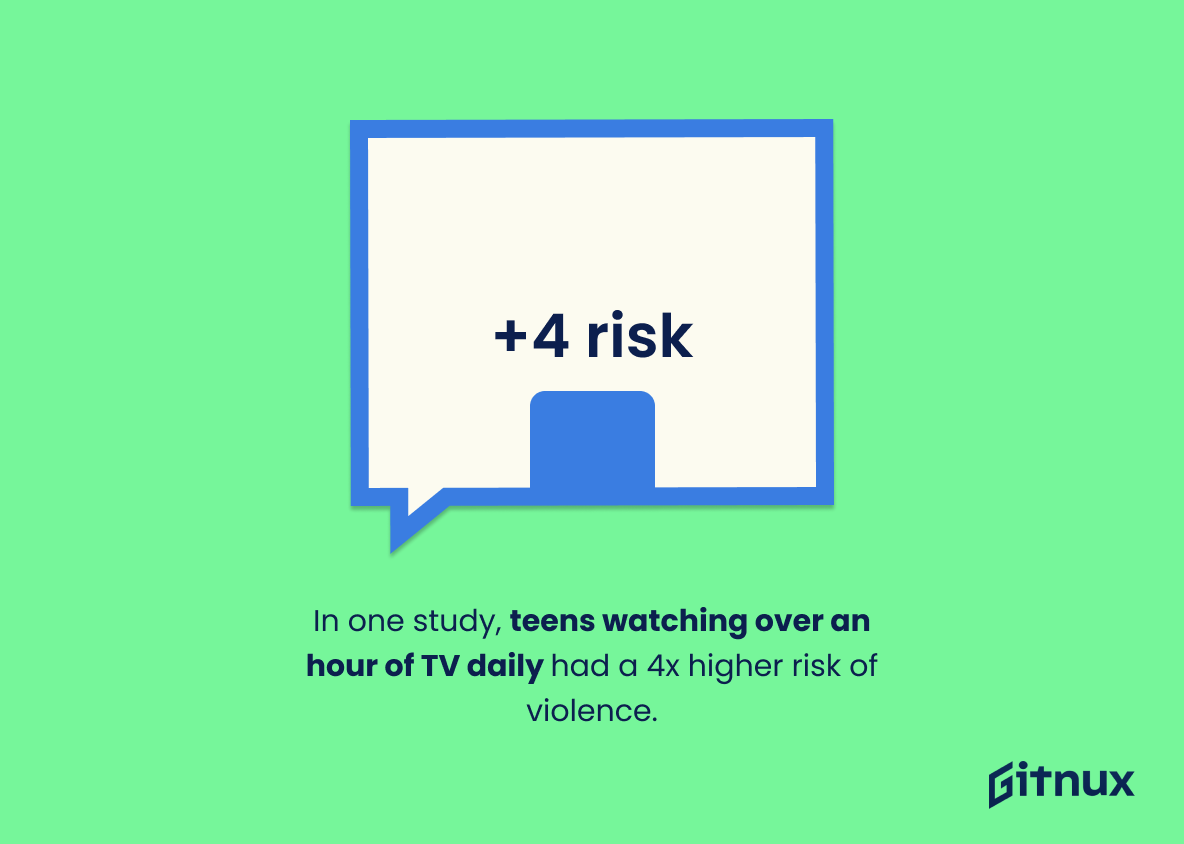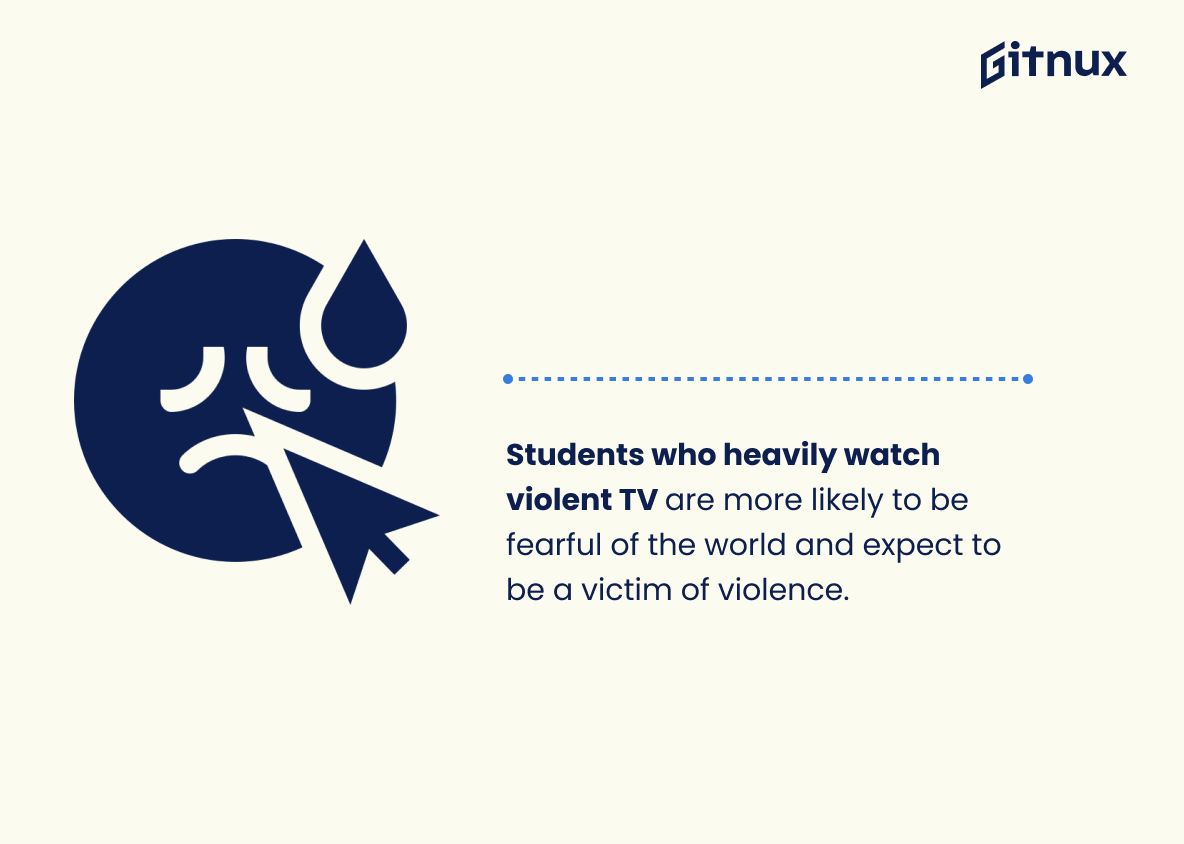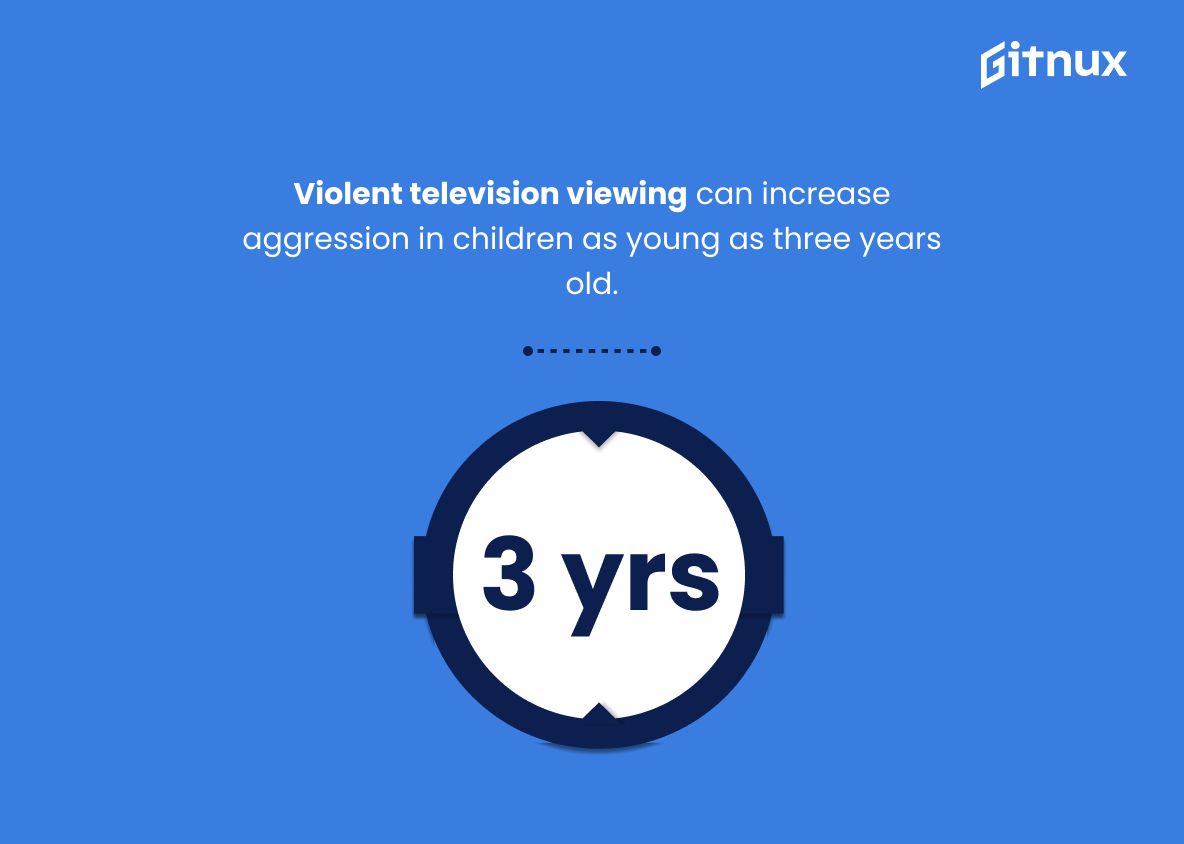The statistics on violence in television are alarming. Studies have shown that children who spend more than 3 hours per day in front of screens have a higher chance of exhibiting violent behavior or aggression (https://pediatrics.aappublications.org/content/140/2/e20162592). Additionally, 80% of TV programs contain some form of violence (https://www.thenational.ae/arts-culture/on-the-couch-tv-violence-a-reality-1.493481), and by the time an average child becomes an adult, they would have witnessed about 200,000 acts of violence on TV (http://cultureandyouth.org/television
Violence In Television Statistics Overview
Among US adults, 34% believe there is too much violence on TV, and 20% think there is too little regulation for it.
This statistic is a powerful indicator of the public’s opinion on the issue of violence in television. It shows that a significant portion of the population is concerned about the amount of violence on TV and the lack of regulation for it. This information can be used to inform a blog post about Violence In Television Statistics, as it provides a snapshot of the public’s opinion on the matter.
80% of R-rated movies, 70% of PG-13, and 30% of G-rated movies shown on TV contain violence.
This statistic is a stark reminder of the prevalence of violence in television, particularly in movies rated R, PG-13, and G. It highlights the fact that even movies rated for younger audiences contain violence, and that violence is pervasive in television programming. This statistic is an important piece of evidence in understanding the impact of violence in television on viewers.
Children exposed to violent television may be more likely to develop anxiety and sleep problems.
This statistic is a stark reminder of the potential consequences of exposing children to violent television. It highlights the need for parents to be mindful of the content their children are exposed to, as it could have a lasting impact on their mental and physical health. It is a reminder that violence in television can have far-reaching implications, and that parents should be aware of the potential risks.
About 90% of parents express concern about the content of TV shows their children watch.
This statistic is a powerful indicator of the impact that television content has on parents. It speaks to the fact that parents are aware of the potential for violence in television and are taking steps to protect their children from it. This statistic is a reminder that parents are actively engaged in monitoring the content their children watch, and that they are concerned about the potential for violence in television. It is a reminder that parents are taking an active role in protecting their children from the potential harms of television violence.
Heavy television exposure is linked to lower scores on standardized reading tests.
This statistic is a stark reminder of the potential consequences of heavy television exposure. It highlights the fact that television, which is often seen as a source of entertainment, can have a detrimental effect on a person’s reading ability. This is especially concerning when considering the amount of violence that is often depicted on television. It is important to be aware of the potential effects of television viewing, and this statistic serves as a reminder of the need to be mindful of the content that is being consumed.
The children’s TV shows made in the United States are one of the most violent amongst developed countries.
This statistic is a stark reminder of the prevalence of violence in children’s television shows produced in the United States. It highlights the need for parents and guardians to be aware of the content their children are exposed to, and to take steps to ensure that they are not being exposed to excessive violence. It also serves as a call to action for television producers to be more mindful of the messages they are sending to young viewers.
In one study, teenagers who consumed more than one hour of TV per day were 4 times more likely to commit violent acts or assaults.
This statistic is a powerful indicator of the potential influence of television on teenagers’ behavior. It suggests that there is a strong correlation between the amount of time spent watching television and the likelihood of committing violent acts or assaults. This is an important piece of information to consider when discussing the effects of television on young people, and it should be taken into account when discussing the potential dangers of violence in television.
Students who heavily watch violent TV are more likely to be fearful of the world and expect to be a victim of violence.
This statistic is a stark reminder of the potential consequences of exposing young minds to violent television. It highlights the need for parents and guardians to be mindful of the content their children are consuming, as it could have a lasting impact on their mental health and outlook on the world.
For every hour of television that children watch daily, their risk of exhibiting attention problems such as ADHD increases by 10%.
This statistic is a stark reminder of the potential consequences of exposing children to violence on television. It highlights the fact that not only can violence on television have a negative impact on children’s mental health, but it can also increase their risk of developing attention problems such as ADHD. This is an important issue to consider when discussing violence in television statistics, as it emphasizes the need for parents to be mindful of the content their children are exposed to.
Violent television viewing can increase aggression in children as young as three years old.
This statistic is a powerful reminder of the potential impact that violent television viewing can have on young children. It highlights the importance of monitoring what children watch and ensuring that they are exposed to age-appropriate content. This statistic is a stark reminder of the need to be mindful of the messages that children are receiving from television and to take steps to protect them from potentially harmful content.
Over 1,000 studies have confirmed a relationship between media violence and aggressive behavior.
This statistic is a powerful testament to the undeniable link between media violence and aggressive behavior. It serves as a reminder that the effects of violence in television are real and should not be taken lightly. With over 1,000 studies confirming this relationship, it is clear that violence in television has a significant impact on viewers, and should be taken into consideration when discussing the effects of media violence.
Conclusion
After reviewing the statistics on violence in television, it is clear that there are many potential risks associated with children watching too much TV. Studies have found a correlation between heavy exposure to violent media and increased aggression, anxiety, sleep problems, desensitization to violence, lower reading scores and even an increase in attention issues such as ADHD. Furthermore, only 4% of violent content contains any anti-violence messages which could be counteracting these effects. The American Academy of Pediatrics recommends limiting screen time for children to 1-2 hours per day; this may help reduce their risk of developing negative behaviors or attitudes due to excessive viewing of violent television programs.
References
0. – https://www.eurekalert.org
1. – https://www.cnn.com
2. – https://www.bu.edu
3. – https://www.statista.com
4. – https://www.commonsensemedia.org
5. – https://www.healthychildren.org
6. – https://www.apa.org
7. – https://www.ncbi.nlm.nih.gov
8. – https://www.thenational.ae
